

The Radio Room does not hold all of the electronics on the ship. Here are some of the other systems; and, yes, the radio room crew has restored and maintains these as well.
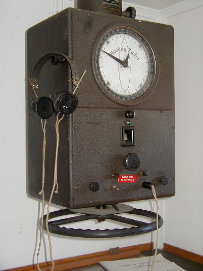
The Mackay Radio Company, which manufactured the main radio communications equipment for the Victory ships, also made the direction finder. Not exactly a modern GPS, the direction finder nevertheless allowed the operator to zero in on beacon signals for determining the ship's location.
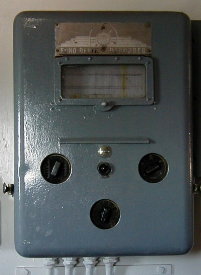
The echo-depth finder (aka, fathometer).
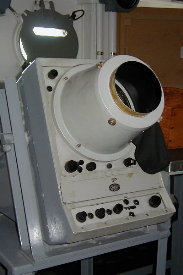
Radar.
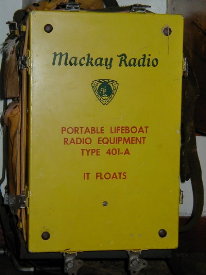
Mackay also made the emergency radio equipment for the lifeboats. This item was probably introduced post-WWII (i.e, not part of the original equipment).
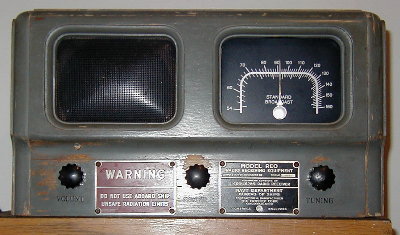
This AM receiver was not actually from a Victory ship, but it is of the general vintage and was used aboard a naval vessel. A warning on the front warns that it should not be used if there's a possibility of an enemy detecting its RF emissions. The radio was donated to the Red Oak by ROVARC member Ron Smith, KE6RS, and restored to full working condition by ROVARC member Alan Craddock, WB6DXZ.
Not every piece of communications gear on the ship was high tech. Sometimes a decidedly low-tech solution was called for...
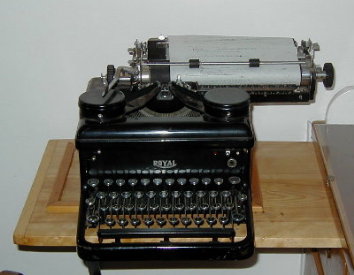
Early "word processor." Power outage? Not a problem! This amazing device was completely immune to hard disk crashes too.
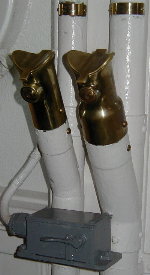
Believe it or not, this was an "audio/visual" communications device. Located on the bridge, the captain could shout or whistle a signal (AUDIO) through either of these two brass tubes to other areas of the ship. The switch/key below the tubes activated signaling lights (VISUAL) atop the forward king posts.
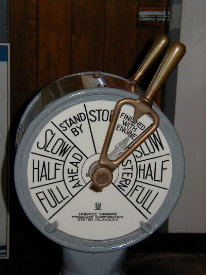
This is how the captain communicated with the engine room. "Full speed ahead" was mechanically transmitted from the bridge with this simple lever.
Here are some members of the ROVARC through the ages.
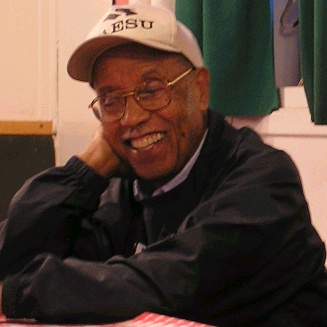
ROVARC Station Trustee - Vern Orme, AA6YE
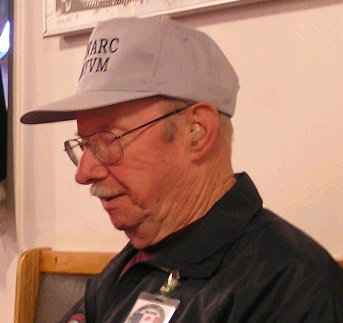
Assistant Chief Engineer - Jim Waite, WA6EZJ
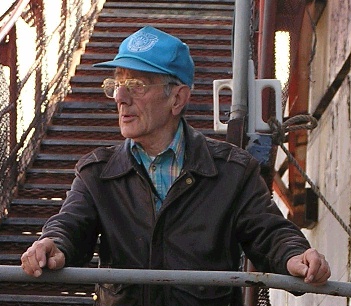
Richard Secondari, K6TR [SK]
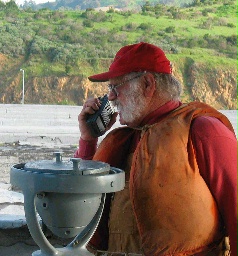
ROVARC President - Gary Elliott, WA6KCP

Former ROVARC Web-master - Peter Hoffman, W6DEI
Although the Red Oak Victory is not a large ship by modern standards, it's still a handful to move. Here are some images of it coming to its new berth.
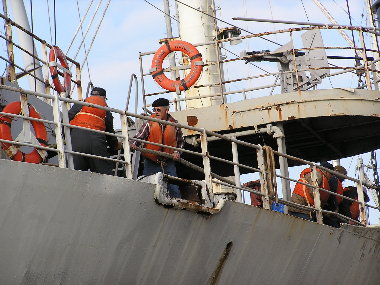
Red Oak volunteers man the lines in preparation for getting underway to our new home.
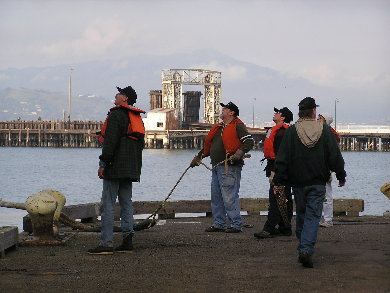
The last lines are hauled on-board as shore crew watches.
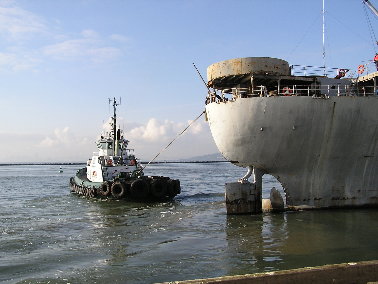
The Foss tugboat slowly pulling the Red Oak away from the dock.
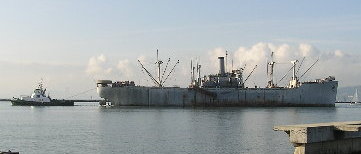
Things are going very smoothly here at about the halfway point. The weather was nice and traffic in the small channel was minimal.
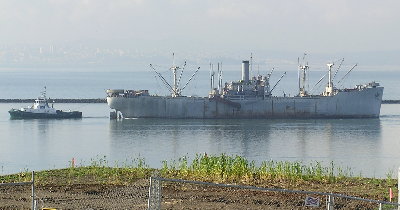
Almost there...
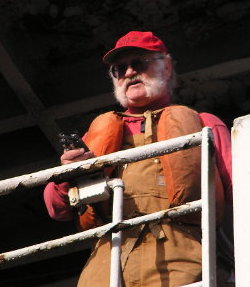
As the Red Oak is eased into its new home, former ROVARC President, Gary Elliott, looks down from an upper deck to survey the scene.
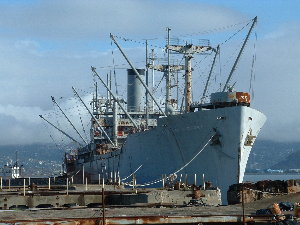
This photo courtesy of ROVARC member Ron Jacobs, WA6CCF, shows the Red Oak in its new home - from a great vantage point for viewing all the ship's rigging.
Here are a few images that don't fall into any particular category other than we find them interesting.
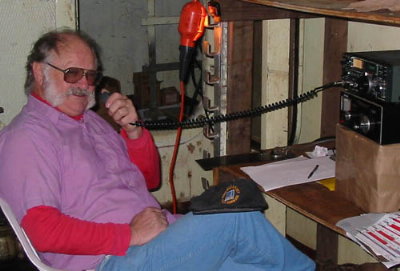
ROVARC President Gary Elliott, WA6KCP, at the controls of the amateur radio station, K6YVM, located in the after ammunition room.

Accommodations were hardly luxurious aboard a Victory ship. But, of course, the captain's cabin was top drawer. Surprisingly, the oak woodwork on these Victory ships was executed with superb craftsmanship, even during the stresses of war time. Not surprisingly, the restoration by volunteers has been just as well done.
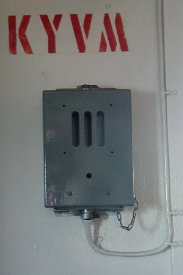
The ship's original Merchant Marine call sign, KYVM, displayed on the forward bulkhead, port side of the bridge. ROVARC's amateur radio call just adds a 6 for California, K6YVM.

It's not easy getting a good photo of the Red Oak, as it sits in its dock in Richmond. But here's one of the bow.
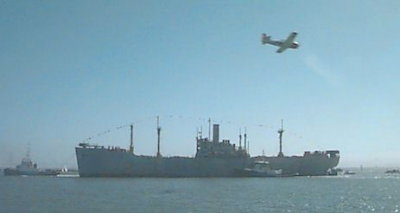
The Red Oak Victory on its way from the "mothball" fleet to its present location in Richmond.

Illustration from Victory ships and tankers; the history of the "Victory" type cargo ships and of the tankers built in the United States of America during World War II, by L. A. Sawyer and W. H. Mitchell. Cornell Maritime Press, Cambridge, Md.,1974.